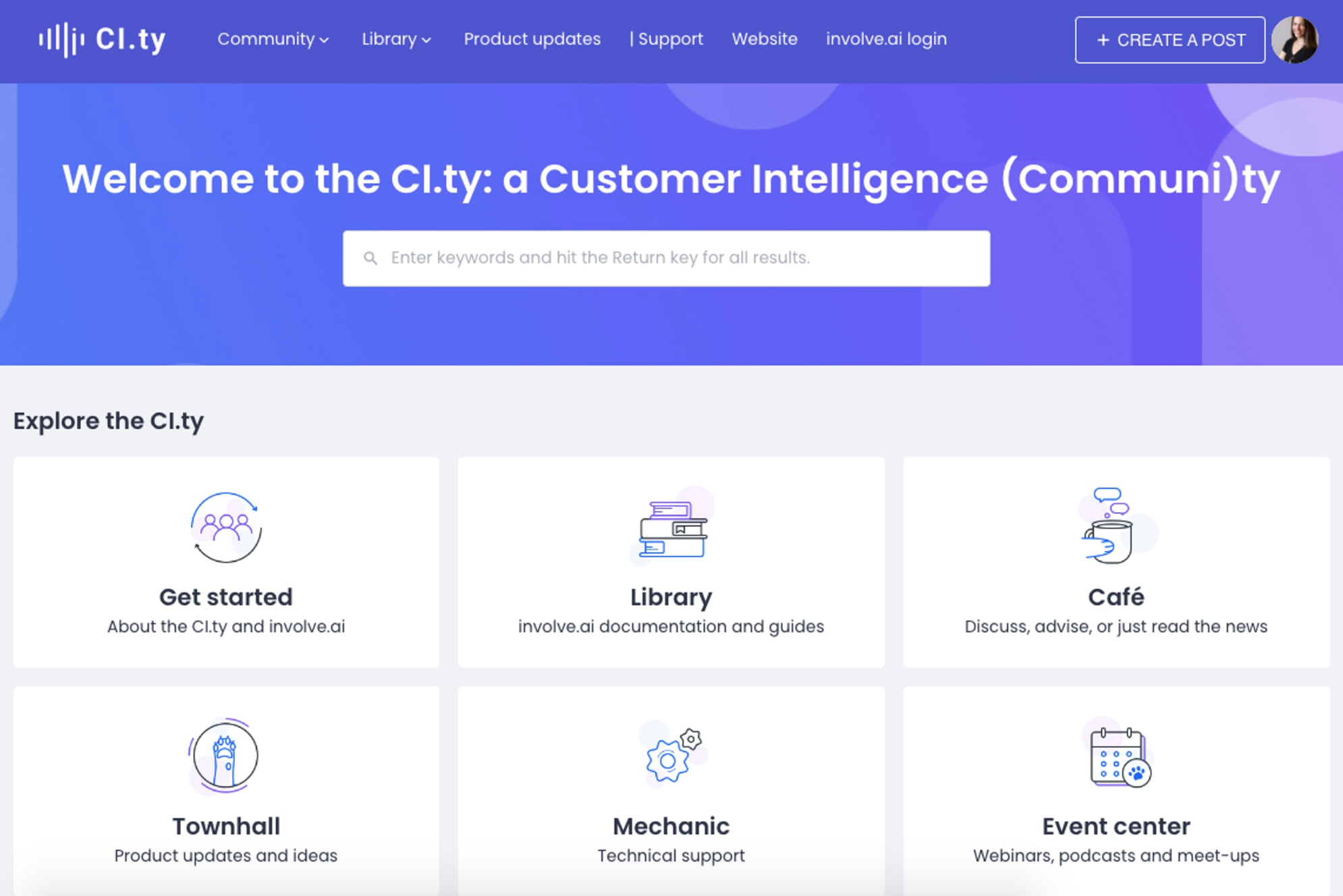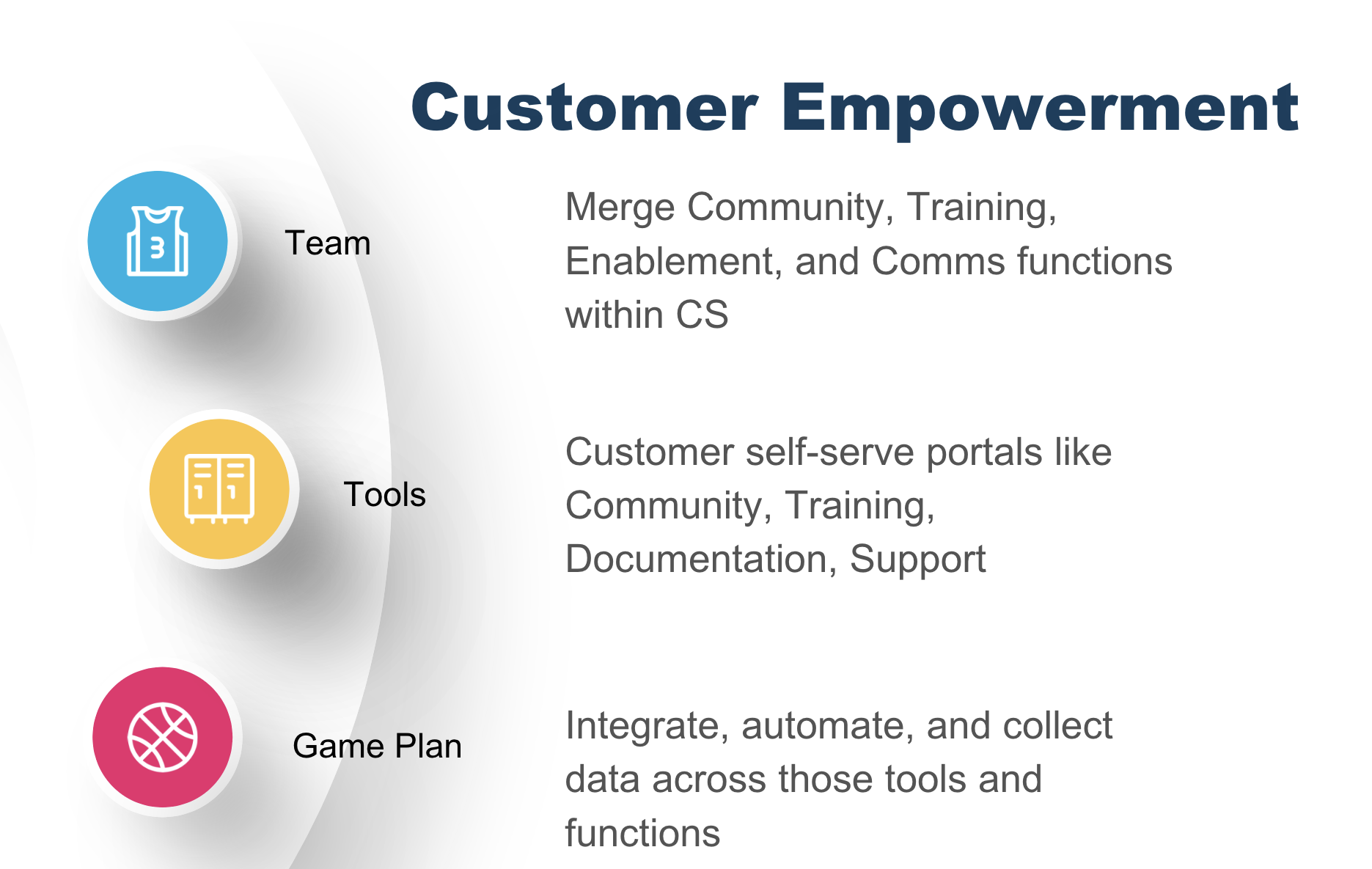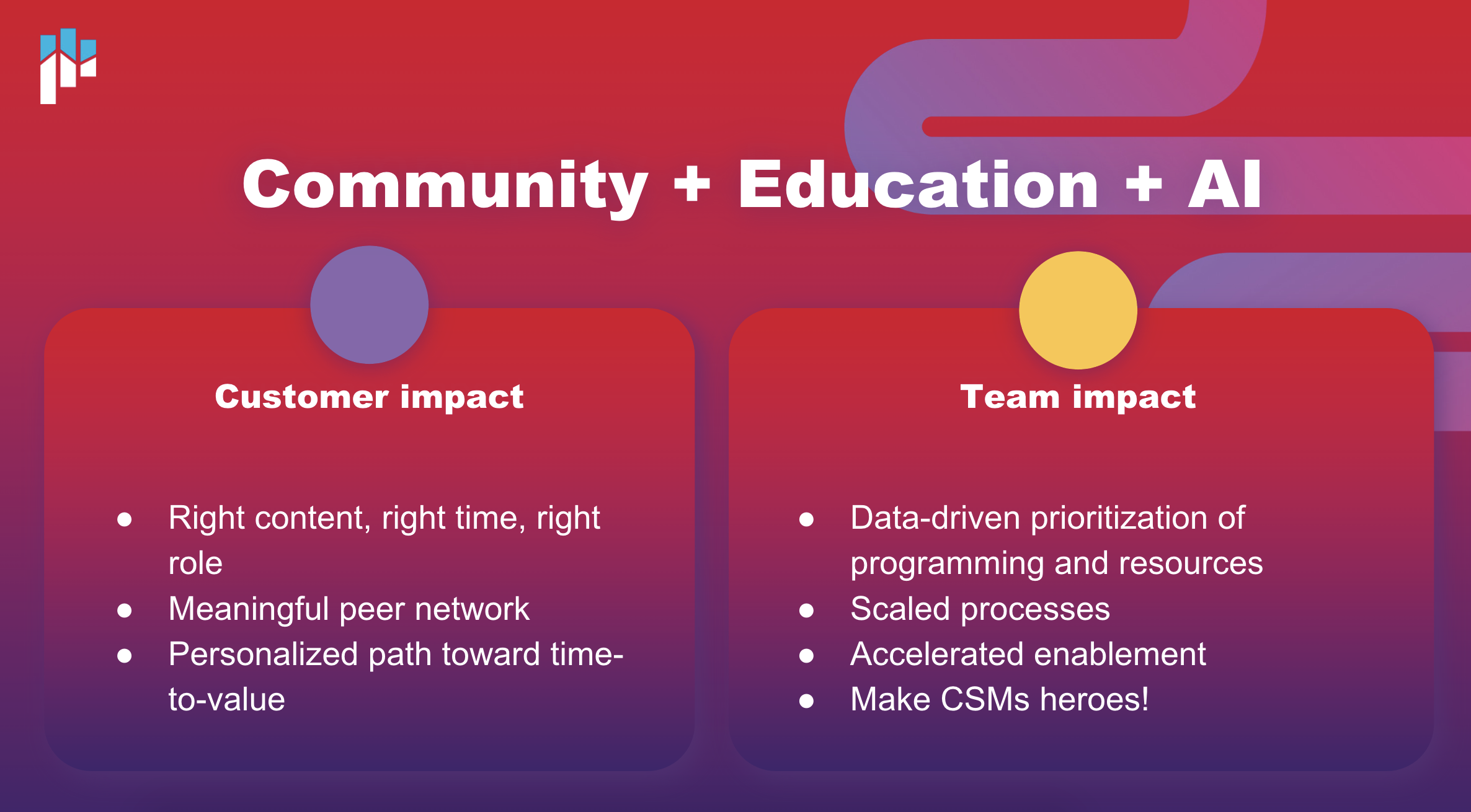It’s the third post of our Pulse 2022 blog series! First, we covered why community needs a seat at the table and the shared mission between Community and CS.
Now, we dive into how community, customer education and predictive analytics fuels customer empowerment.
Mary Poppen, Chief Strategy & Customer Officer and Brigid Colver, Sr. Manager of Customer Intelligence Community, of involve.ai broke down the past and present of Community and how we can empower our customers with Customer Success analytics.
Having previously built a thriving Community for Glint, and now building an even better community at involve.ai, this Pulse 2022 session was packed with great learnings.
Community: From ad-hoc to must-have
During a distant time long, long ago, customer communities used to be ad-hoc, a “nice to have” in the world of traditional, low-tech CS. Usually built by bigger companies due to their large(r) amount of customers, communities were mostly seen as a reactive way to relieve the strain on e.g. the companies’ support teams.
Over the years, things have changed tremendously. As many businesses shifted to SaaS and rapidly scaled up growth, the need for a CS strategy became essential. With this change also came the desire from customers to self-serve. That already makes a lot of sense right? We’ve all been in situations where we’d rather have had the tools to solve a problem ourselves, instead of having to call an agent at a call-center.
But something else happened as well. As CS became a more mature function, and metrics like NRR, adoption, and expansion started appearing in every board deck, Community Managers realized they can do more than drive the ability for customers to self-serve. They discovered that building a community actually impacts happiness, retention, and that a well-positioned Community as a central hub to all customer content can help you win deals, expand accounts and garner more adoption of new features.
Thus, the narrative on Community shifted to not only be an expectation, but also a must-have within the concept of customer empowerment and durable growth of a company.
 The involve.ai Community
The involve.ai Community
What is customer empowerment?
Customer empowerment is a key part of CS and Community, but needs to be cross-functional in order to succeed. It’s the overarching strategy of how you’re enabling customers to be more successful with your software and products, and how you’re enabling them to become more proficient with them as a professional.
So, what exactly does customer empowerment entail? There are three components:
- Team: they merged Community, training/education, enablement and communication functions within the responsibilities of Customer Success
- Tooling: customer self-service portals like community, training, documentation, support, preferably in once central location (Customer Hub)
- Game plan: integrate, automate, and collect data across all of these tools to be able to make assumptions on the customer journey
The goal is to provide your customers with the resources and go-to self-service tools they need in order to be engaged across teams and functions. It’s about creating a seamless experience for your customers to succeed.

So, how do you combine all of that into one integrated program. The easiest way is by knowing how to select the right combinations of tooling, process, and integrations. Doing this will allow you to create a seamless customer journey, every step of the way.
Poppen and Colver gave us an inside look at the approach and layout of tooling that has worked for them in the past, from onboarding to in-product integrations:
- Tech-touch onboarding program: Gainsight + inSided + Skilljar + Zendesk
- Customer Success Center / Customer Hub – inSided + Zendesk + Skilljar
- Automated and cadenced customer communication – Gainsight + inSided
- In-product chatbot – inSided + Zendesk
Some clear examples, if you’re looking!
When you have tooling and integrations done, you’re not done yet. In order for customers to see actual value from the technology ecosystem you’ve built for them (and you to be able to get meaningful data), you need content.
Content is probably the most important thing in the world of Communities and CS. It inspires, it solves problems, it helps customers use your products in a better way. As much as the above picture is integrated, your content strategy will need to be different on e.g. the Community vs. the LMS platform you’re using to create guides and courses. Think about what’s needed on every channel separately, and then bring it together in one overarching content strategy to make sure they complement each other.
Data and predictive analytics
Once you have your tooling in place, what to do with all that data?
Technology has caught up and we can now apply AI to customer data. Yes, AI! Not the stuff of science fiction but rather predictive analytics to identify what drives healthy customers from those who churn and what drives expansion.
Today, we can help reduce churn and assist with predictive analytics to help CS teams better understand the customer health, at scale.
Community empowers your customers AND your team(s)
“Community is the gateway to and the
foundation of customer empowerment.”
Brigid Colver, Sr. Manager of Customer Intelligence Community, involve.ai
Now there’s a quote!
Let’s unpack that quote beyond just the great looks of it. Community is sometimes seen functionally as just a platform, or a tool to get your customers together. While that is a valid use-case, Community when looked at holistically is a better way of your employees and your customers working together for the greater good of your company, and theirs.
What that means is that building a Customer Community isn’t something you only do for your customers, you’re actually doing it to uplevel your own business as well. Put differently, there’s Customer and Team impact.
We’ll explore both!
Customer impact
Starting with customer impact first! Customer impact means making sure that customers have the right content at the right time (sometimes even for the right role) to help them achieve their goals with your product(s) faster and more efficiently. This is very important, as your customers want to see results quickly, and you want them to come back to the Community as the source of information that helps them get there:
- In-depth guides
- FAQs
- How-to articles and more.
From a true Community perspective this also means helping your customers build a meaningful peer network. That’s because your customers are probably all using your product(s) with similar goals in mind, or at least are quite literally using the same software. This means they might run into similar opportunities, challenges or have similar questions. It’s so powerful to then enable them to connect, and help each other get those issues addresses (and such a relief to your CS team).
Now, while a lot of Community strategies will be applicable to all customers (and segments), obviously there’s a need for personalization as well, as some customers might be in a different phase than others. Some of your customers might still be onboarding, while others are full-blown advocates already and can be used as referrals for your brand.
You need to take great care and cater to their progress along the customer journey by making sure content suiting their phase is readily available when they get on the Community.
To empower your customers, you must first empower your team. Everyone knows that building a data-driven team has an outsized impact on the efficiency of their work (they can make better choices) and on the actual workload (the Community handles e.g. a lot of the FAQ-like questions asked).
Team impact
So, you’re offloading some time spent on simple tasks for them to the Community on the one end. That leaves them with more time to focus and to make better choices, but you do actually need to give them the insights needed to spur them along. Most Customer Success teams already use a CS CRM like e.g. Gainsight. However, there is much to learn from Community data as well. Think about the types of content certain customers are engaging with, feature requests they’ve posted or supported. But also how they are doing from a health score perspective vs. a peer company, and how Community can help them get next-level results.
Thus, implement data-driven prioritization of CS Programming and resources required (reporting) to amplify your team’s impact for customers and their customers. Tech stack integration is key, but so is the value placed on collected data and making that available in an easy way to the CSM and Community Manager.
Similarly, ensure your processes are scaled for maximum efficiency. Eliminate bottlenecks with automation, digital-led engagement strategies, and a community with one-to-many approach. Ask yourself, does this really require 1-1 time with a CSM, what value is my customer getting from that time spent, or is there another way for me to achieve the same result, by e.g. sharing insight on a planned cadence.

Never forget: accelerated enablement makes your CSMs heroes, without the human-heroics.
Final thoughts
Community, customer education and AI all come together to empower your customers.
Using these three components, companies form the foundation upon which we to customer education programs. And those programs are a continuum from formal training to snackable articles.
This is the future and the future is actually right now. We can optimize what we’re creating, how we’re delivering it to the right audiences to have the most impact on our customers.
View the full, 100% ungated session here: Watch a full video


